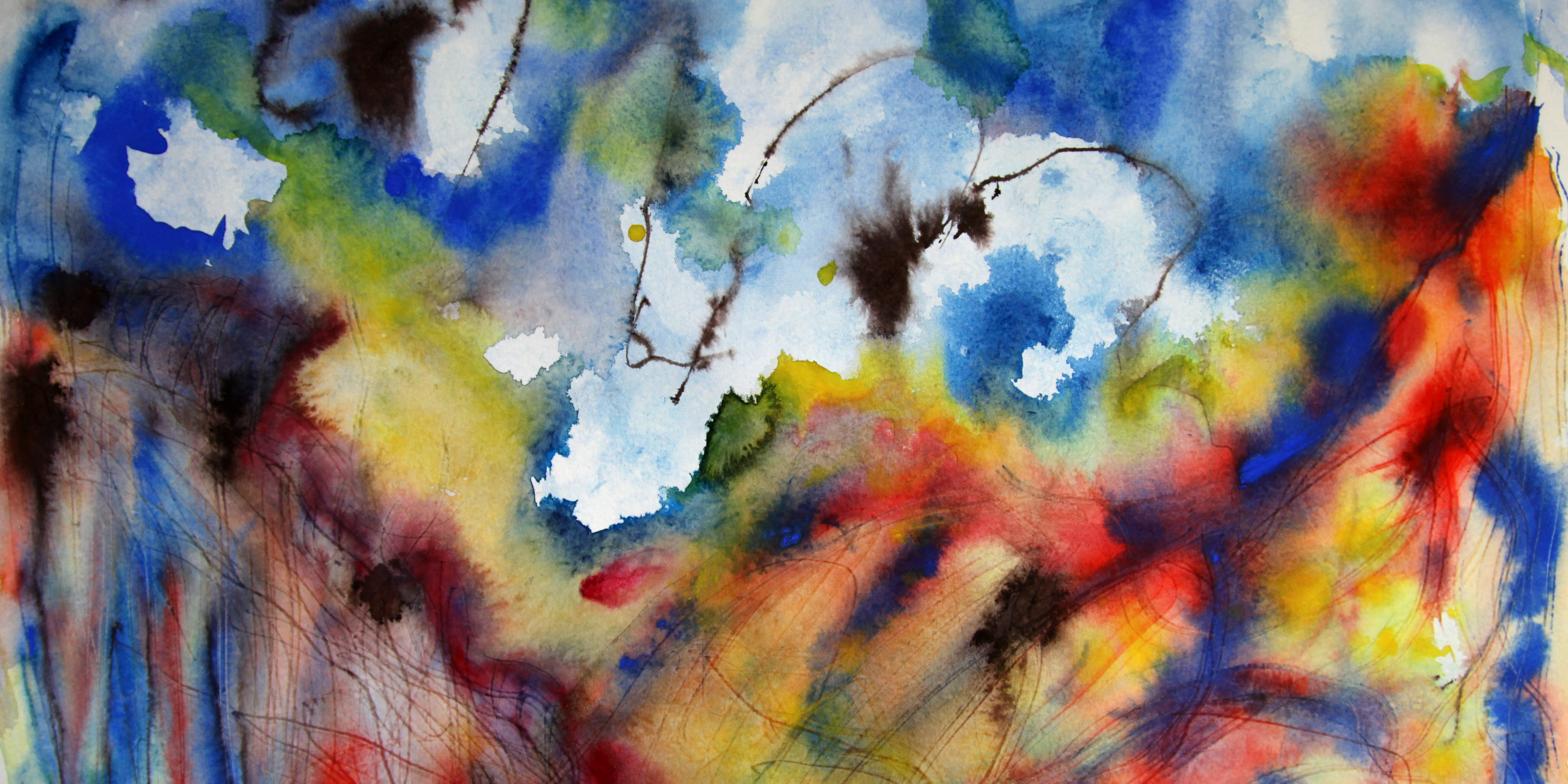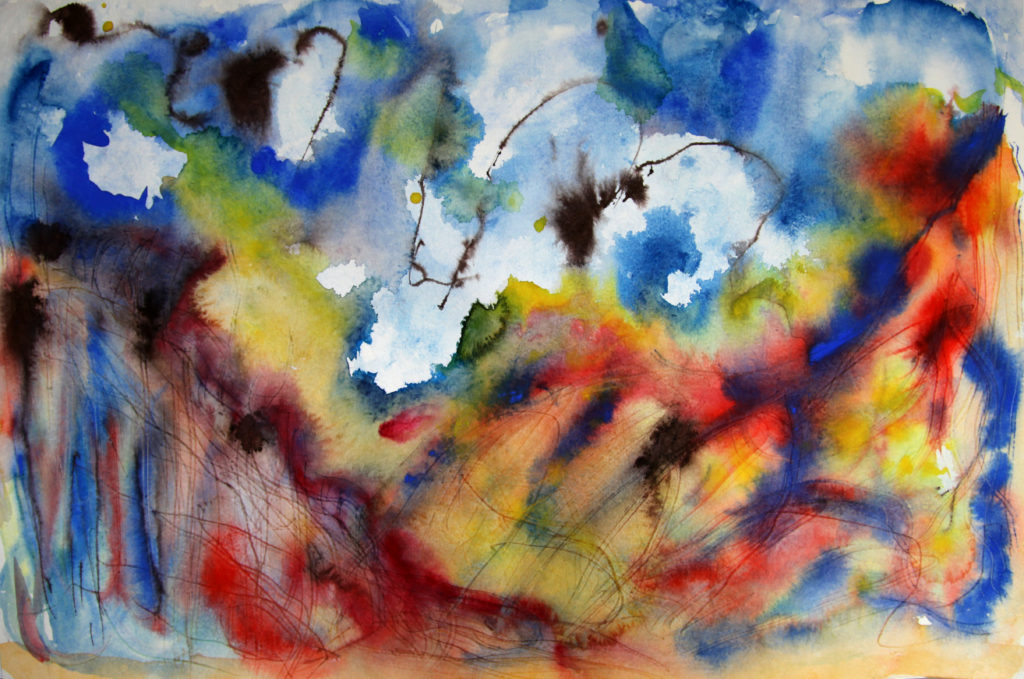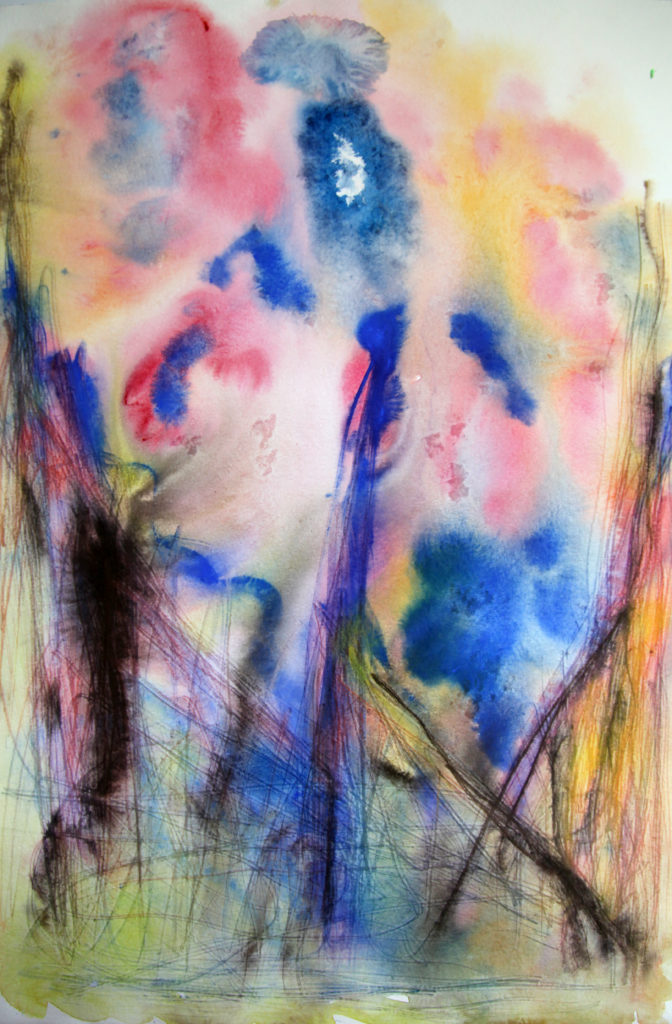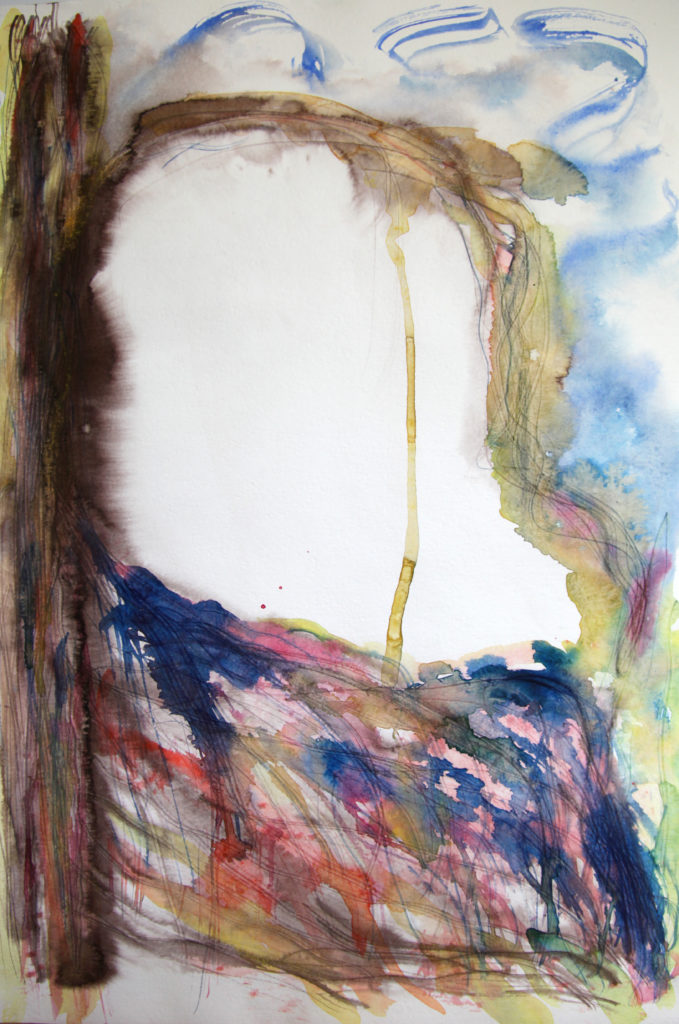
Reflections on working in Art and Trauma
by Isha Bae and Katika
Molly grabbed my forearm and staring straight into my eyes she paused before she said, “God has been cruel to me.” Her words, her look of anguish, and the intensity of her tone pierced straight through me like a punch into the stomach. I wanted to say to her, Me too, I wanted to say, I’m so sorry! I wanted to say, It’s going to be okay; I wanted to say so much to her. But instead I held her arms in a gentle embrace, I looked straight back into her eyes and I said, “I know”. I sent her as much compassion from my heart as I could muster, as she was led back to the car by her carer.
This was Molly, one of my favourites at the centre. She was usually playful, cheeky and fun. This was a sobering moment for me at the beginning of my journey into working in art and trauma. While finishing my art therapy degree, I was on a work placement at a seniors’ day centre, where we ran activities to enhance social inclusion and wellbeing. On the first day I arrived I was confronted; there was an arresting unease running around my body, I was witnessing the slow and eventual decay, demise, the death of my group members. The same week I began at the centre I found myself in a specialist room where a Doctor said to me, “you have cancer, we will have to cut out your uterus”, as he left through the door, presumably to go tell someone something else. I was suddenly confronted with my own mortality.
For three weeks I sat alone in my room thinking about life, and about the end of life and I came to three questions that I asked myself. Have I been kind to others? Have I stayed true to myself? Have I helped others in the best way that I can? Three weeks later back in the same hospital room this time with the registrar… and she says, “oh no, you don’t actually have cancer, and we don’t have to cut out your uterus; English is not the Doctor’s first language, that’s just the way he described it to you…” My life would continue with the ability to create new life intact… and now I suddenly had three clear mandates in the way to live it out… These are what keep me going, these are what keep me strong.
Carrying these with me and into the present moment, this is what I know: my experiences in life continually inform my own art therapy practice… And when I process the deepest emotions and darkest parts of myself, I am able to be more present for others. I am now facilitating sessions for the Painting with Parkinson’s group… Some find it difficult to walk, sit or stand, some have lost their speech… Some have trouble swallowing and choke continuously while eating, they also deal with tremors, rigidity, and slowness of movement, difficulty writing/grasping things with their hand and fingers. These are the symptoms that are visible… But the incredible life of these individuals pre-Parkinson’s sometimes seeps through… One person has lived through a prison camp; another was a draftsman for parliament house; another was an engineer on space stations throughout Australia, not to mention his business as a stained glass window maker on the side. Then come the other details every now and again — one slips into delirium and is hospitalised and has to deal with the overuse of antibiotics, there are more hospital stays, medication trials and errors, depression/anxiety, and in the two years I have been with the group, three members have passed away.
There are many ways in which art is beneficial for people with Parkinson’s disease — such as a reduction in their symptoms during art making, social inclusion and an increased sense of well-being and self-confidence — however, I will focus on one session that I facilitated and the response from one participant, Katrina.
The Lark Ascending – Isha’s Facilitation
The theme for this session was The Lark Ascending (1881), a poem written by George Meredith about the song of the skylark. This poem subsequently inspired Ralph Vaughn Williams, the English composer, to write a musical score of the same name. The work premiered in 1920 for solo violin and orchestra. On the published work Vaughn Williams inscribed the opening and closing lines of the poem, and six selected lines between them:
He rises and begins to round,
He drops the silver chain of sound,
Of many links without a break,
In chirrup, whistle, slur and shake.
For singing till his heaven fills,
‘Tis love of earth that he instils,
And ever winging up and up,
Our valley is his golden cup
And he the wine which overflows
to lift us with him as he goes.
Till lost on his aerial rings
In light, and then the fancy sings.
We began the session with a short meditation in order to centre the body, quiet the mind, and bring us into the here and now. We began by feeling the weight of the body in the chair, the heaviness of our clothes, and the atmosphere on our skin… I then asked participants to smell their surroundings, to taste what is in their mouths… and to listen to the sounds around them… to hear the closest sound and the furthest sound, the quietest sound and the loudest… and we rested for a few moments just listening. In this session I then led participants into a short imaginative variation. I asked them to sense their bodies from their feet, slowly moving upwards to the top of their heads and then sensing upwards from our heads towards the sky, we went higher and higher and I asked them to imagine what it would be like to be a bird soaring in the sky…
We followed this with some gentle stretches and body movements. This session I led with some Tai Chi focusing on the arm movements that imitate the bird such as Separating the Clouds, Flying Wild Goose, and Flying Pigeon.
I then read out the poem to everyone and played the musical score with the volume turned up loud (as to immerse the listener). We listened to Vaughn Williams for the rest of the session as the participants painted with wet watercolours on wet paper.
This was intended as a multisensory experience, the purpose of which was to embody the theme of The Lark Ascending through multiple layers. We engaged the mind through imagination, the body through movement, and everything that the creative representations of poetry and music may evoke, such as cognition, memory, emotion, connotation, journeying… Therefore, even before making their first mark, the participants have access to different elements of their subconscious enacting as a prompt towards creation. Also, by having a multi-modality approach, it ensures that there are multiple points of access as a starting point. Some will resonate strongly with one phrase or sentence of the poem, some will focus on the movements we made, and some will just happily paint along to the rhythm of the music.
I gain as much, if not more than the participants from the sessions I facilitate. I am continually humbled by the human spirit, by its triumphs, its harrowing beauty, of loss, of love, of connections and art. Art is a vehicle to express it all.
The Lark Ascending – Katrina’s Experience
The Lark Ascending reached me on so many levels. Listening, with all our concentration, for all the sounds inside and outside the room:
Playing and shaping our arms and hands,
Feeling and moving to the rhythm of a bird lost in flight
To soar and explore the wonder of flight;
To enjoy the journey of escaping as high as your body could fly
Up, up, up, into the wonders of the clouds.
The feeling of escape;
The music of Williams pierced my inner soul as our wet paper was placed in front of us to capture all our mind, body and senses had been exposed to. I was totally immersed in trying to portray the haunting sounds of the violin encapsulating the movements of the lark winging round and round and up and up above the golden valley.
In my first piece (Figure 1) I painted quickly the explosion of feelings and words inside me. The lark represented by the black ink rising and rounding amongst the clouds in loose aerial rings. The start of the formation of the overflowing golden cup filling the valley below with a sun filled golden glow, for the lark to watch as he was caught in the air currents moving around and around and opening his wings to soar above his breathtaking earth he had left behind.

This valley became my focus as I moved to my second painting (Figure 2), changing the paper to portrait, and the colours of the poem and music took over as I worked on the formation of this valley immersed in the golden colours of sun. The central blue stroke representing the rise from the valley of the lark.

My final piece was ‘Our Valley’ (Figure 3) framed in the painting by the trunk of a tree on the left and one ever so long branch coming down, down, down into the valley below. I finished the painting and kept thinking of the golden cup and the word “overflow” from the poem and painted the long branch in the golden hues of the sun. Here was a perfectly formed valley in my mind with a loose pool of golden paint above it. I sat and deliberated for ever so long and then lifted the painting up and allowed this golden paint to overflow into the valley below. This single drop of paint representing the drop from the golden cup spilling over into the valley below where we watched our lark ascending. My lark was lost soaring in the clouds above, unconscious of the effect he had had on us mortals below!

I remember standing up at the end of the painting session after the gold paint had dripped into the valley. It took me time to gather my thoughts and come back to reality. I had been lost in my own world creating on the thick wet paper with beautiful strong wet watercolours and ink. Using these class staples I had worked on the images in front of me with the help of ink, sticks, feathers and brushes. I had escaped reality for an hour and a half; I had flown with the lark!
My body was stiff, and I walked out into the sun to view the group’s collective interpretation of the music, poem and stimuli. What I loved about this session was no one interrupted me, commented on what I was producing, and I could be lost in my own mind for this time, without needing to worry about people’s perception of what I was doing. My mind and body had been on vacation from Parkinson’s, lost in flying with the lark, with the music stimulating my strokes.
Isha Bae is a writer working in poetry, prose and personal essay. She has a background in visual art, photography and moving image, and often combines all of these disciplines. Isha also works as an expressive arts therapist, and currently facilitates sessions for the Painting with Parkinsons group in Canberra.
Katika (Katrina Sümeghy) discovered painting when diagnosed with Parkinson’s in 2010 and has kept an ongoing reflective journal. Katika engaged with Isha Bae to write a piece capturing the art therapist and artist perspectives, highlighting the value and thought process of this collaborative form of structured, holistic approach to artistic engagement.
